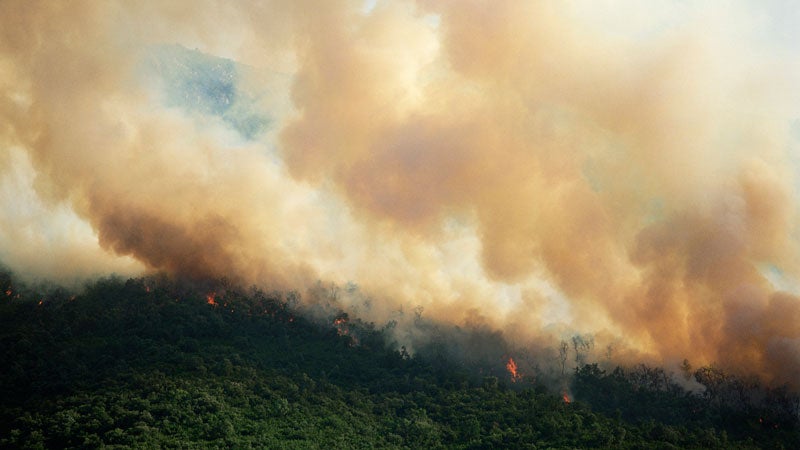This weekend, a new video posted on YouTube features helmet-cam footage from the Yarnell Hill Fire that claimed the lives of 19 firefighters. The video captures the final radio conversation between the Granite Mountain Hotshots and the fire’s air attack plane circling overheard.
Much of that conversation has already been documented in the two investigations that have been released after the fatalities (read about the first here, and the second here). However, the most recent video, captured by another firefighter at the edge of the blaze near Yarnell, contains new details, including the verbatim exchange between the Granite Mountain team and the air attack plane—and the time that transpired between calls and response.
The dialogue during their final moments is horrific and heartbreaking. But as disturbing as the audio can be, it has raised larger questions: Why did it take Granite Mountain four calls to raise Air Attack on the radio? And why did it take so long for Air Attack to react?
The simple answer may be that Air Attack, which oversees all of the aerial firefighting operations and directs helicopters and tankers to targets, was overwhelmed. On a typical fire, one that isn’t threatening to burn hundreds of houses, they can field literally thousands of radio transmission in a day. During the most hectic moments of a firefight, they may be monitoring five or more radio frequency.
The second point to consider: Would an earlier response (more than two minutes elapsed before Granite Mountain heard from Air Attack) have made any difference? Was it possible for Air Attack to redirect a helicopter or a tanker over Granite Mountain’s position. And, if so could, that response have saved 19 lives?
It’s possible, but also highly unlikely. In order for the water or retardant drop to work, the aircraft would have needed to be within a couple of minutes of their location, and more importantly, they would have needed to know the crew’s exact location, which was unclear at the time. And yet even with that information, more variables would have come into play, like the ground wind speed of nearly 50 miles per hour, that may have blown the retardant off target.
The new video provides more insight into the tragic events of June 30. But it still doesn’t answer the most fundamental question: Why did Granite Mountain leave an established safety zone and put themselves in harms way in the basin where they were killed? We may never know for sure, but this is another piece of the puzzle that helps us reconstruct, as near as possible, what happened that fateful day.


